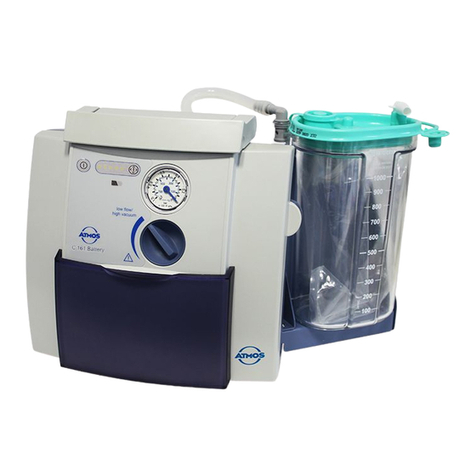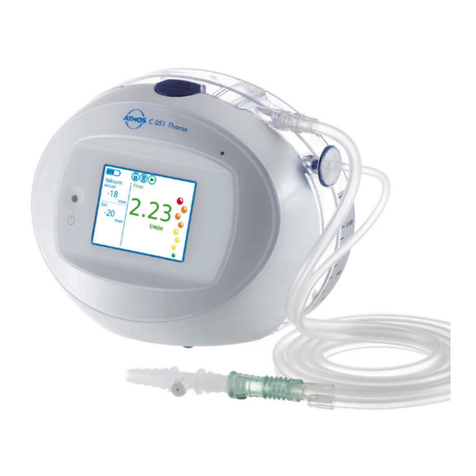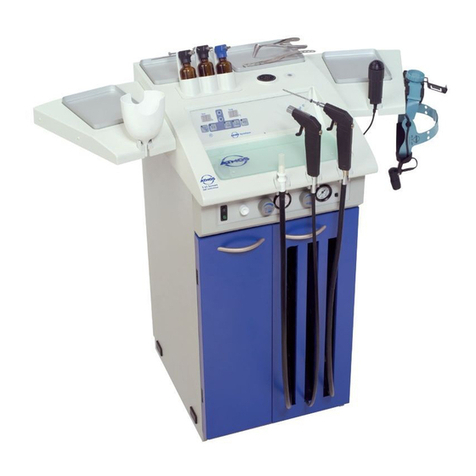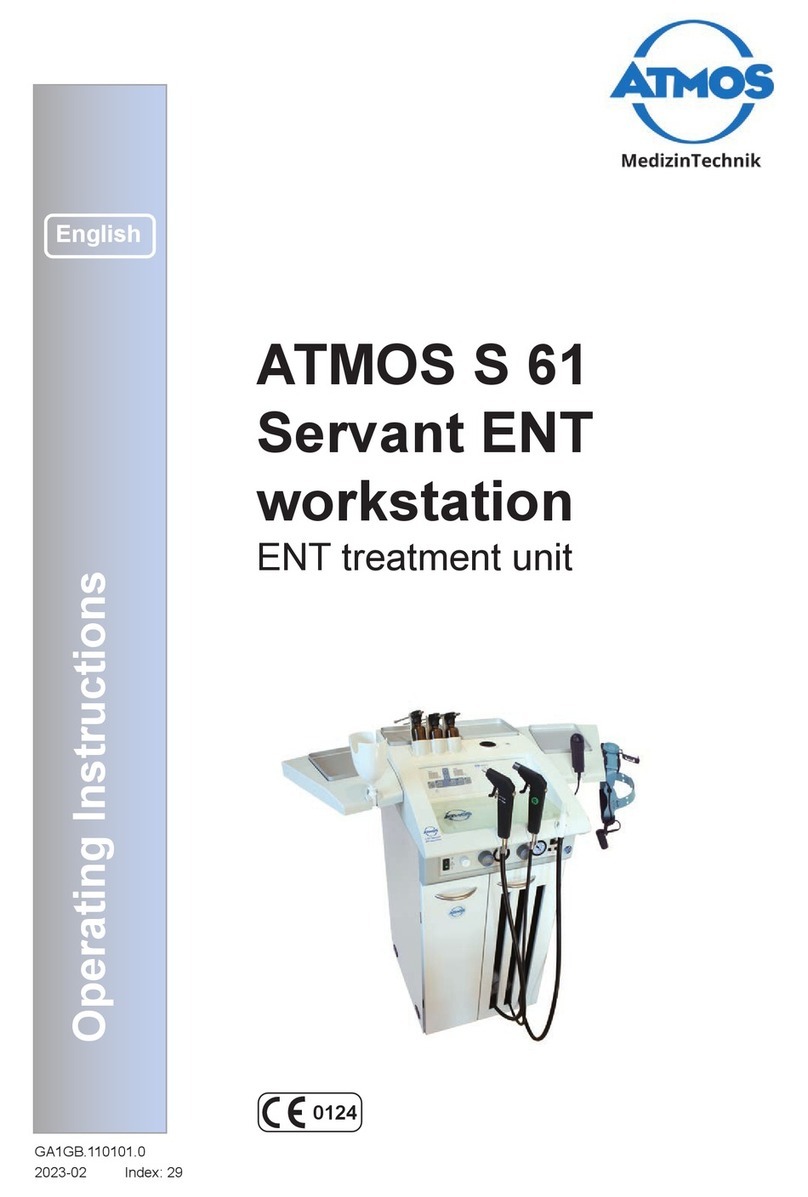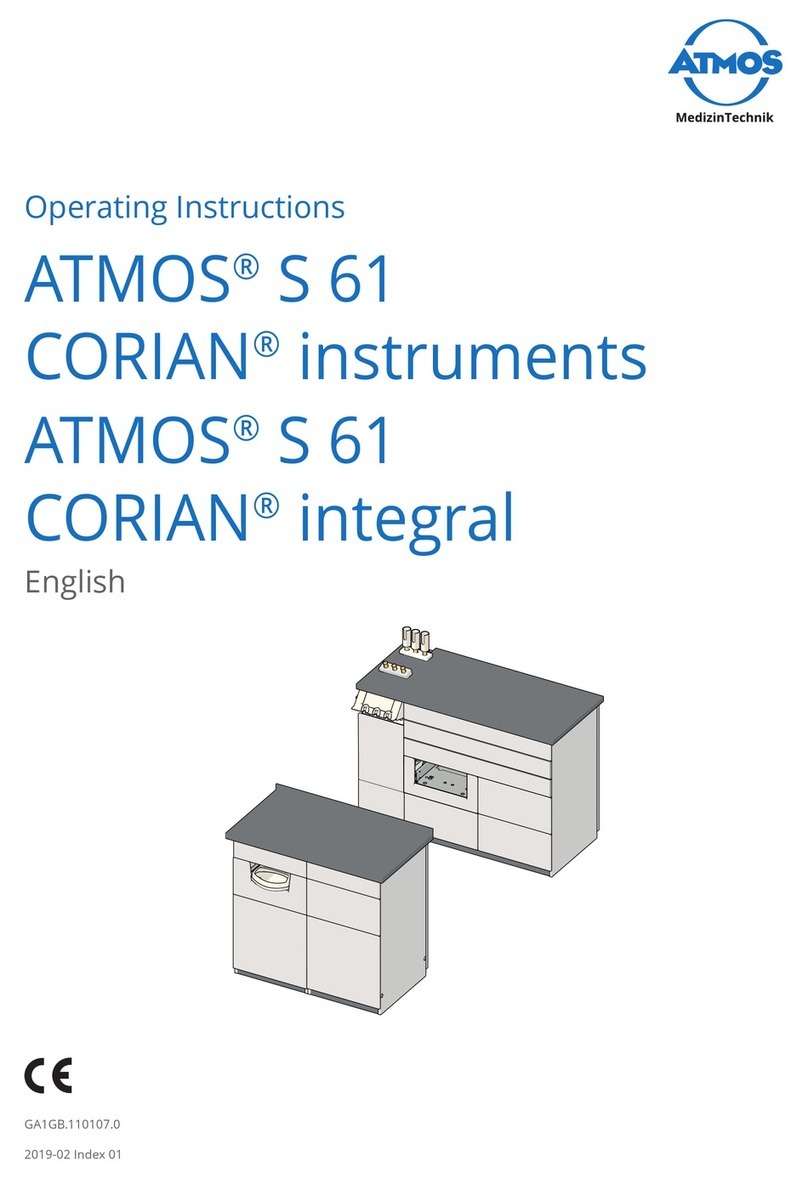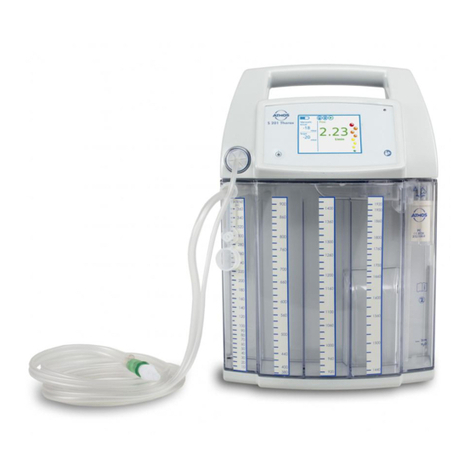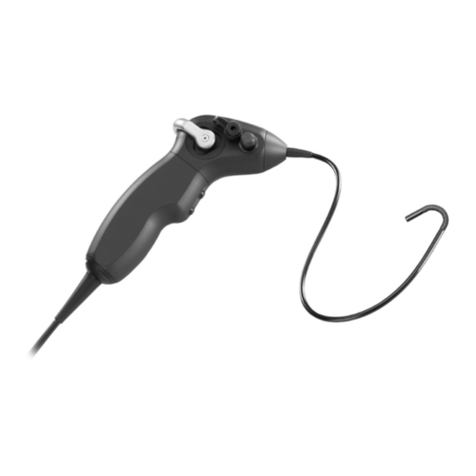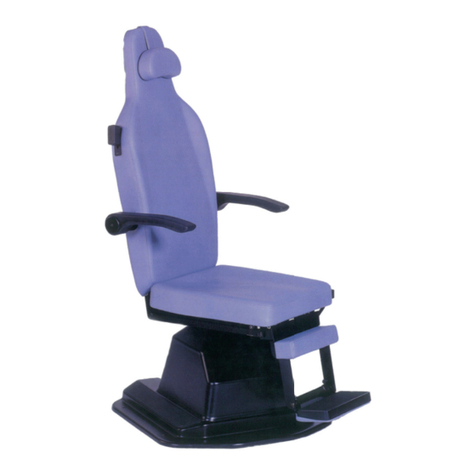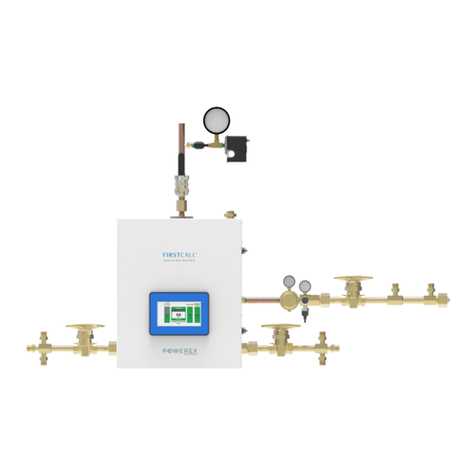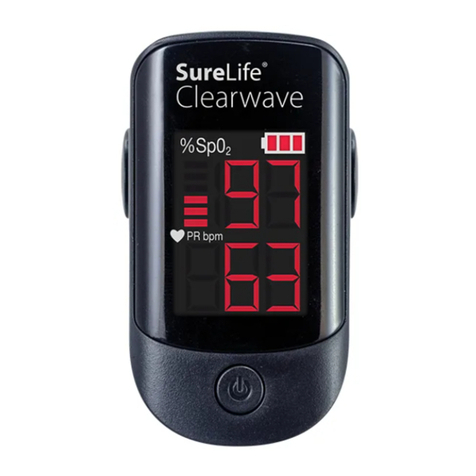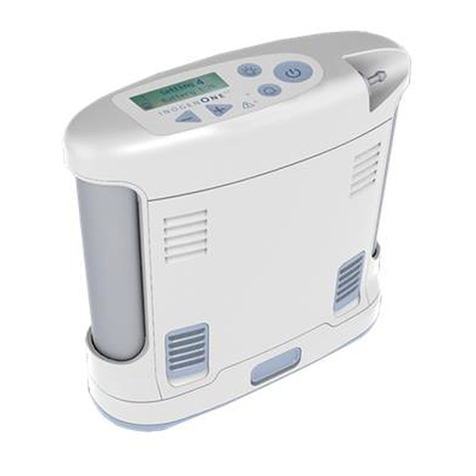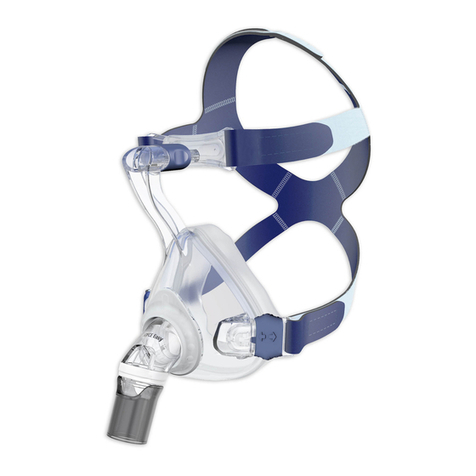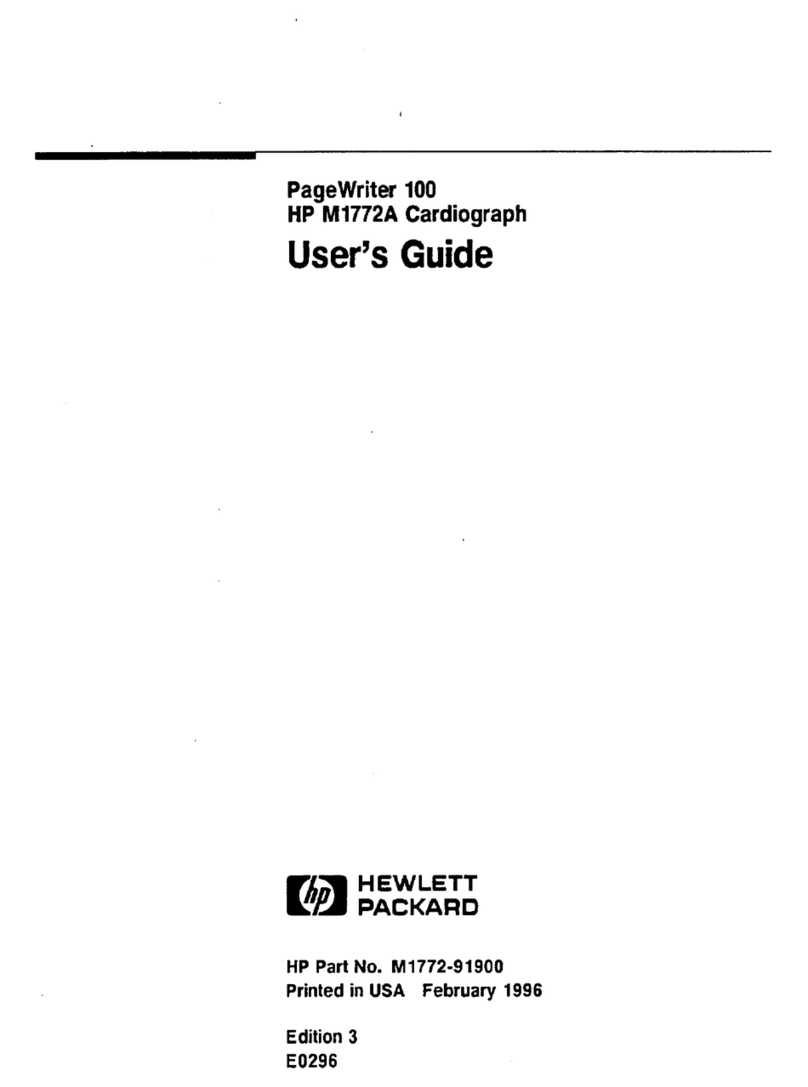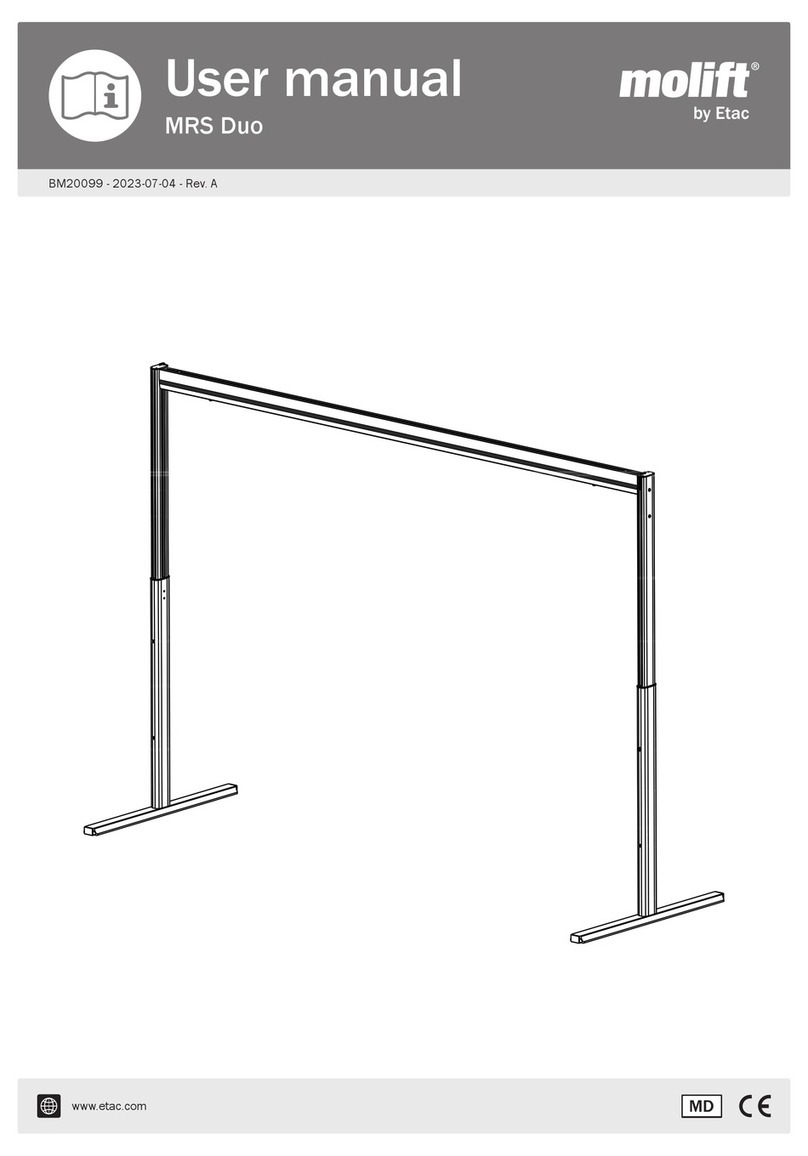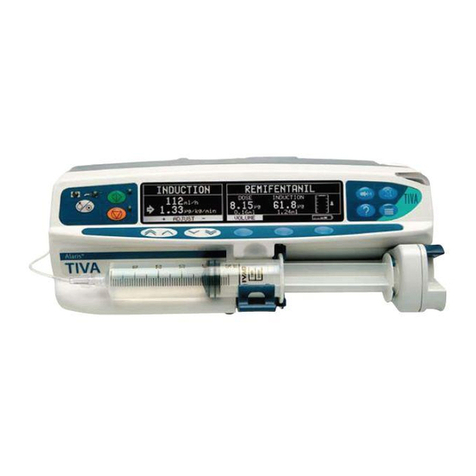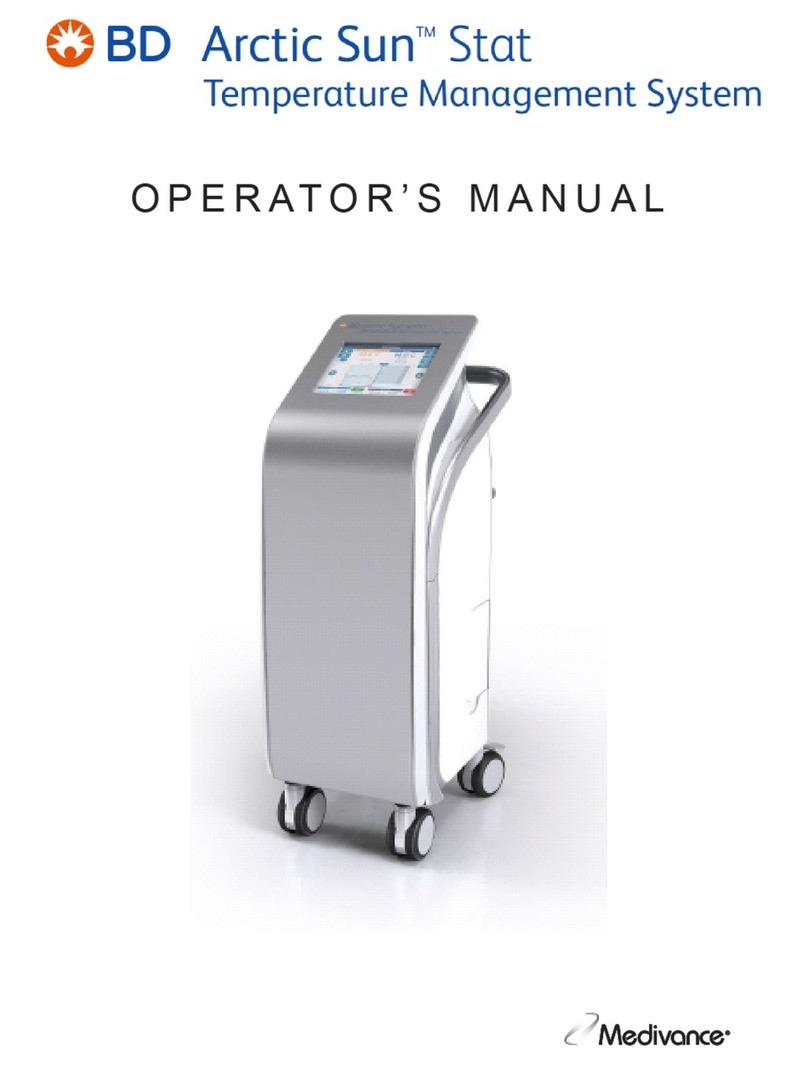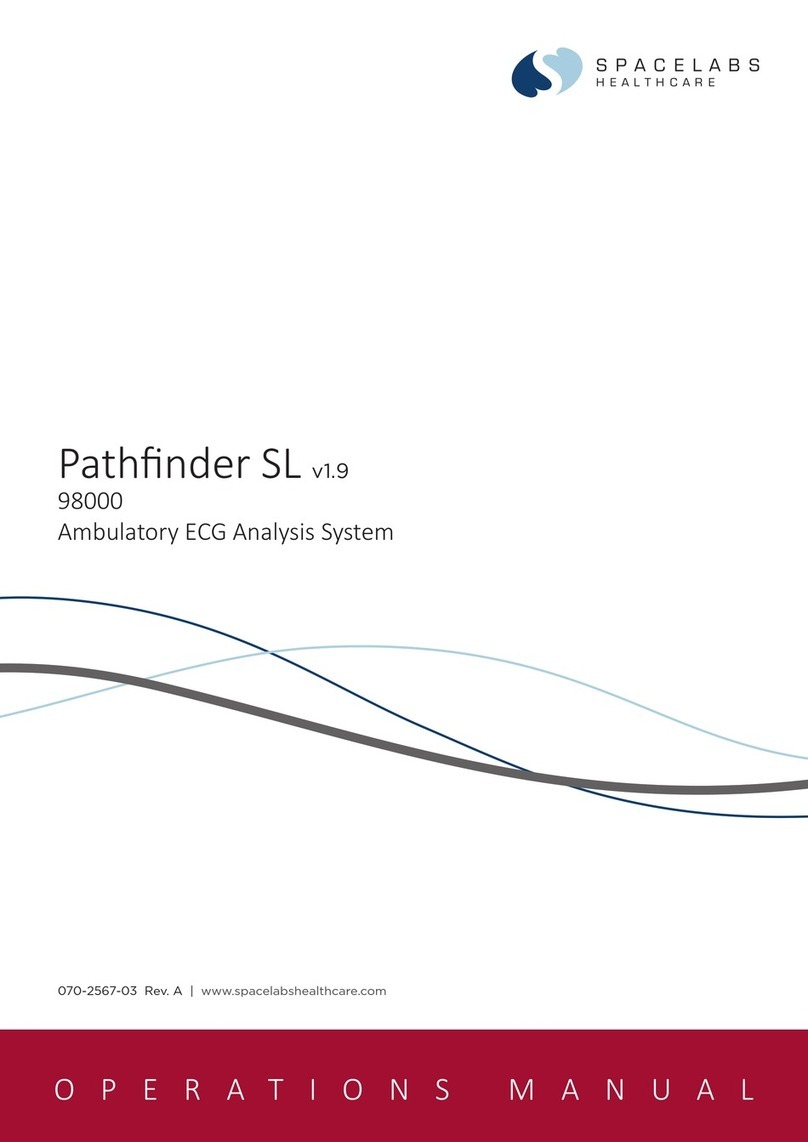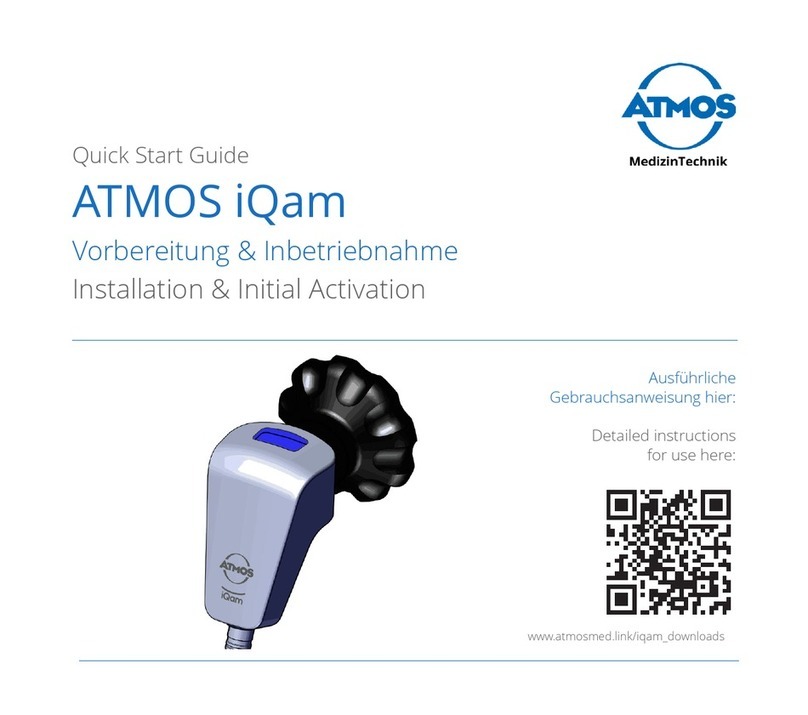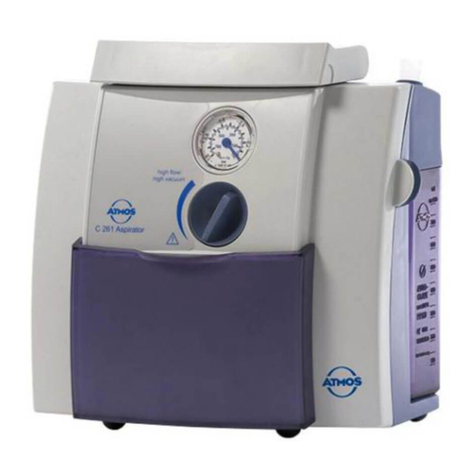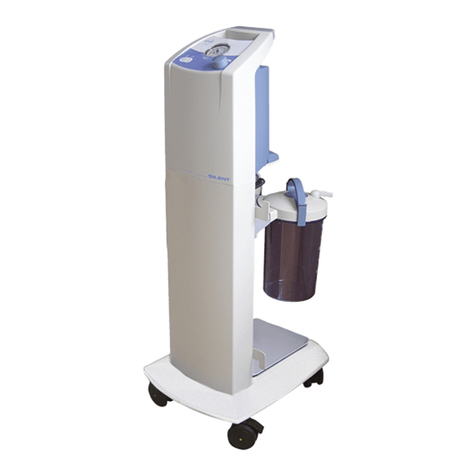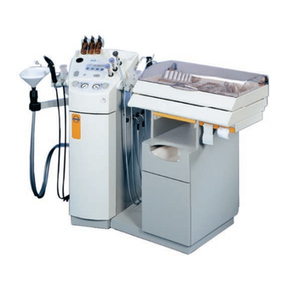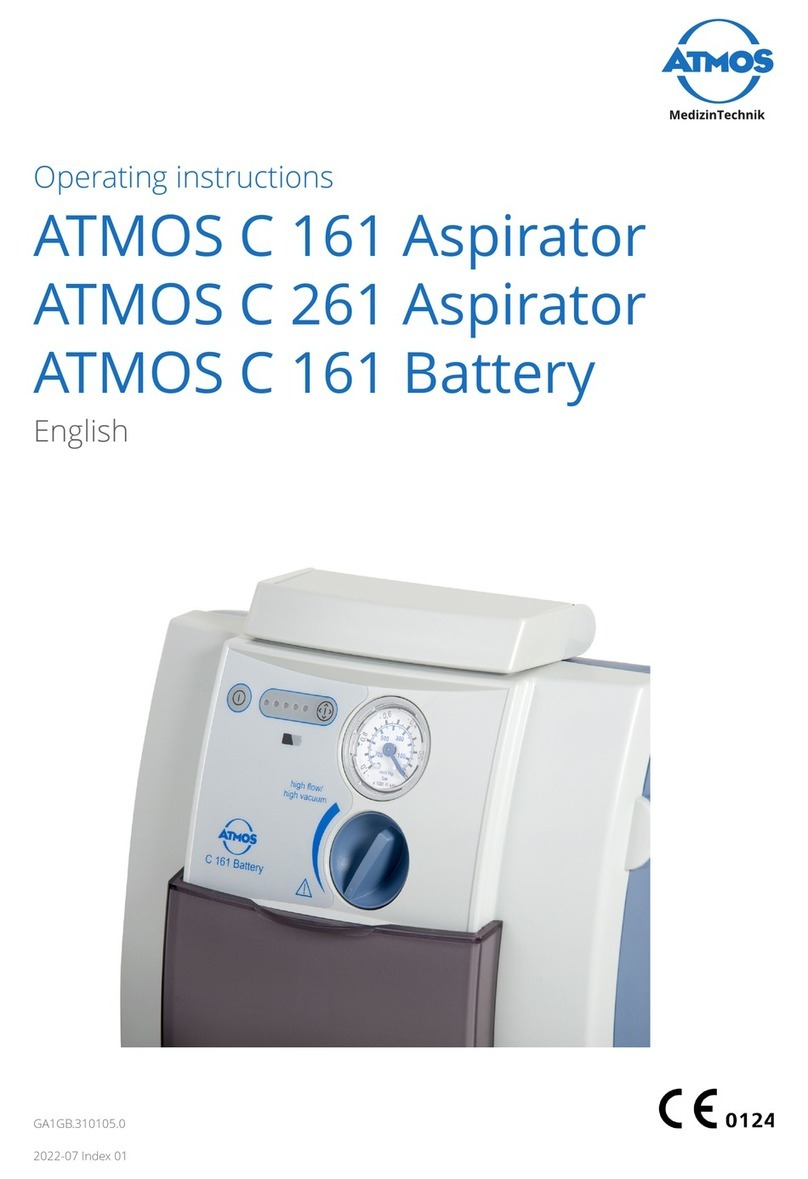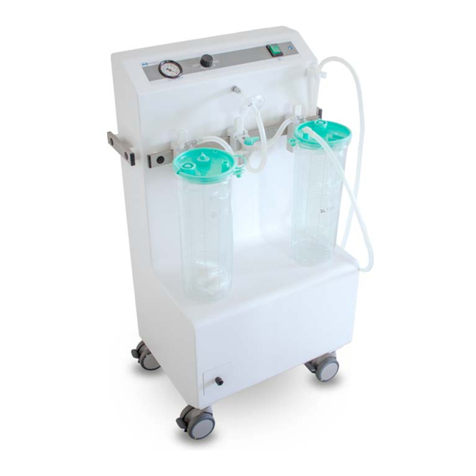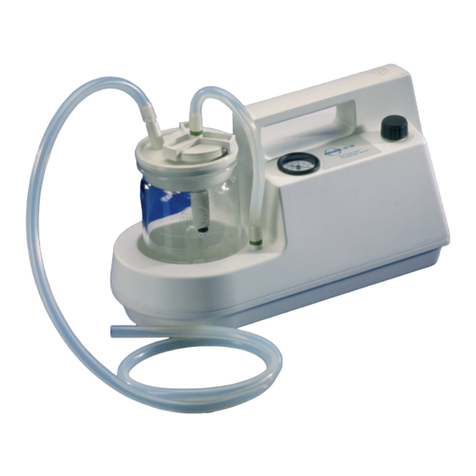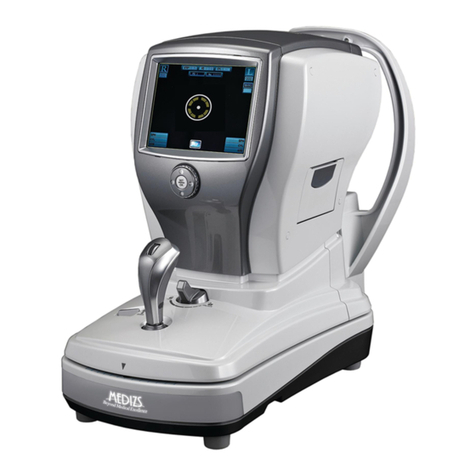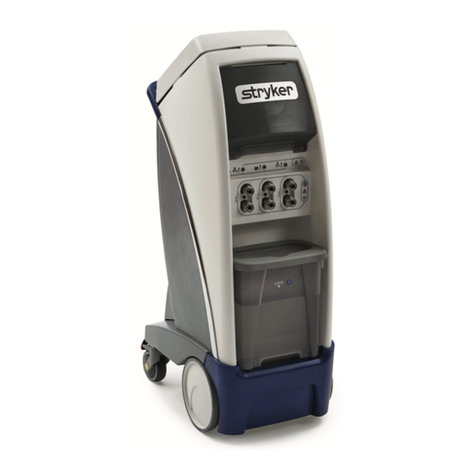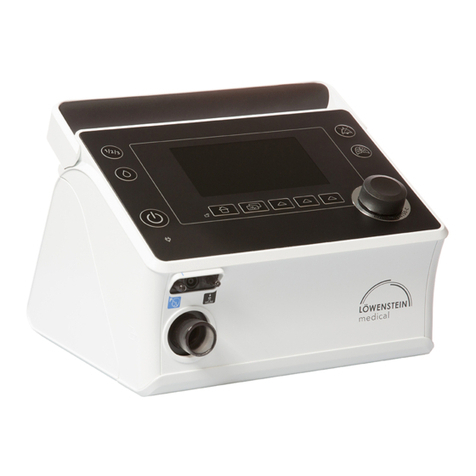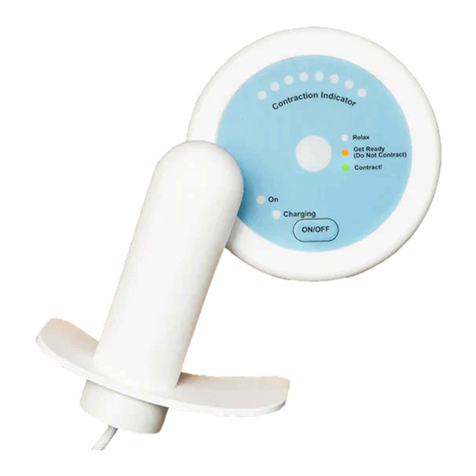
18
• The leakage test function and the warning message ‘Device in critical tilt’ are activated in the
factory settings. If these functions are not desired, they can be deactivated in the user settings
(see chapter ‘4.9 User settings’ on page 43).
• Minimal leakages can indicate small leaks in the system or irregularities in the course of
therapy.Thiscanbeexcludedbyclampingthepatientcatheterandasaresult,theowvalueis
reduced to zero. If not, check all the connections on the device, the connectors as well as the
Luerlockcapforleakage.Ifthereisstillonlyaminimalowvalueillustrated,thenthereisan
internalleakageinthesystemwhichcannotberectiedbytheuser.Thiswillbecompensated
bythesystembutillustratedasaminimalowvalue.
• If the secretion canister tips over during temporary gravity drainage, the functionality of the
water lock for gravity drainage is no longer guaranteed. The vacuum at the patient’s end
ceases, thus posing a risk of a renewed pneumothorax.
• When using the ATMOS S 201 Thorax with hybrid option, the water lock in the secretion
canistermustbelled.Gravitydrainageisperformedwiththedeviceswitchedo.
• The ATMOS S 201 Thorax without hybrid option is not suitable for passive gravity drainage.
Whenthedeviceisswitchedo,thereisariskofarenewedpneumothorax.
• Inthecaseoflargerairleaksandinpatientswithstulas,thevacuumandthusthewater
column in the riser quickly drop to zero. This means that there is no vacuum at the patient’s
end, thus posing a risk of a renewed pneumothorax.
• If a high (negative) vacuum occurs (e.g. due to deep inhalation), the water in the water lock can
rise through the riser. The vacuum at the patient’s end ceases, thus posing a risk of a renewed
pneumothorax.
• The device may not be operated in MRI scanners (magnetic resonance imaging).
• The ATMOS S 201 Thorax is a medical device which is subject to special safety regulations. It
must be set up and put into operation in accordance with the EMC regulations. Portable and
mobileRFcommunicationdevices(mobilephones)mayaecttheperformanceofthedevice.
WARNING
Avoid improper use.
Your patient can be severely injured.
• A misplaced drainage system and a misplaced chest tube could hinder the drainage of air and
liquids. A complete blocking of the system during the drainage of liquids and air could cause a
rise in pressure and thus lead to a tension pneumothorax.
• Employ the device only according to its intended use.
• The product may only be used by medically trained persons who have been instructed in the
handling of the medical suction system.
• Please select the vacuum according to the patient and the application.
• Observe the valid guidelines.
• Observe the notes on hygiene and cleaning.
• Always place the drainage system at the same height as the patient’s catheter and check the
patient hose for any bends or clogging which could hinder the drainage of liquid and air. Never
placethedrainagesystemontheoor.
• Respond immediately to the warning message ‘Secretion canister full or hose blocked’ /
‘Vacuum too low’. Prior to exchanging the secretion canister, the chest tube must be clamped
so that a continuous vacuum is always available to the patient.
• Iftheuidlevelinthesecretioncanisteristoohigh,itcouldcauseablockageandthusa
tension pneumothorax.
• Check the secretion canister at regular intervals and always replace it when the maximum
llinglevelisreachedtoensurethepatient’ssafety.
• Check the hose system at regular intervals. Observe the instructions issued by the attending
physician.
• Bending of the patient hose leads to an interruption of the therapy and incorrect
measurements.




















